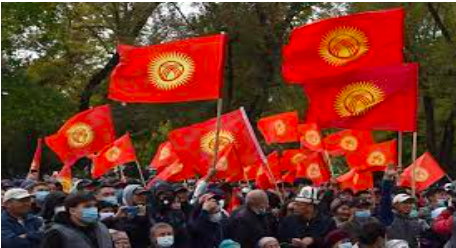Indian Chinese food
Posted on : July 28, 2020Author : AGA Admin

The story of Indian Chinese food begins in 18th century Calcutta (now Kolkata), which the British East India Company established as the capital of colonial India. Located in the midst of a thriving trade route through which items like tea and silk were transported from China to Britain, Calcutta soon began to draw communities of skilled and unskilled Chinese workers. The very first Chinese migrant is believed to have been a tea trader named Yang Dazhao, popularly known as Yang Atchew, who arrived in 1778 and set up a sugar mill on land given to him by the British, bringing people from the mainland to work for him. By 1901, the census recorded 1,640 Chinese people living in the city, researchers Zhang Xing and Tansen Sen write in a chapter on the Chinese in south Asia in the Routledge Handbook of the Chinese Diaspora. By the end of the Second World War, they say, the number had surged to at least 26,250. These Chinese immigrants came from different regions but could broadly be categorised as Cantonese carpenters, Hakka shoemakers and tannery workers, Hubeinese dentists, and Shandong silk traders, Zing and Sen write. These immigrants would lay the roots for India’s obsession with Chinese cuisine.
In 1924, Calcutta’s first Chinese restaurant, Nanking, opened up, serving Cantonese food. Several other Chinese-owned restaurants would open up over the following years, not just in Calcutta but in Bombay, too, where there was another sizable community of immigrants. But it was in Calcutta where the cuisine would begin to evolve, catering more to Indian tastes. Various accounts place its starting point in Calcutta’s second Chinatown, located in Tangra, where the Hakka Chinese set up leather tanneries. The restaurants they went on to establish in the area began incorporating techniques to make food more appealing for Indian customers, notably using a lot more of chilli. How the idea of Indianised Chinese food spread from Tangra to the rest of the country is a bit unclear. What is known is that in about 1974, India’s first Sichuan restaurant opened up at the Taj Mahal hotel in Bombay, introducing locals to a type of Chinese food they had never experienced before: fiery hot.
The evolution of Chinese food in India was accelerated by several such innovations, among them the invention of chicken manchurian. A man named Nelson Wang, the son of Chinese immigrants in Kolkata, is most often credited with its creation. The story goes that Wang ended up in Bombay in the 1970s, working as an assistant cook at another Taj restaurant, Frederick’s. One day, he happened to experiment with mixing garlic, ginger, and green chillies—quintessentially Indian ingredients—with soy sauce and cornstarch to thicken the gravy. The result was the now ubiquitous chicken manchurian. Wang would go on to run a handful of Chinese restaurants in Bombay, but he’s best known for China Garden, a legendary space that took Indian Chinese food from the streets to the glamourous world of fine-dining, complete with monogrammed napkins and elegant and sophisticated service.
As the Chinese community began to dwindle significantly as its members emigrated to places like Canada, Australia etc., with only a few thousand remaining in Kolkata, the Chinese restaurants have come to be predominantly owned by Indians. As for India’s historic Chinese-owned restaurants, many are either gone or simply not what they used to be. At the same time, Asian fusion food is exploding in every metropolis, and urban Indians are savouring much more exotic dishes like ramen, khow suey, and char siu bao. But to this day, there are few who can turn down a plate of crispy honey chilli potatoes or chicken manchurian, because nothing quite hits the spot like Indian Chinese food.
Source: https://qz.com/india/1420618/how-chinese-cuisine-became-indian-food/




